to authentic
French experiences
#01


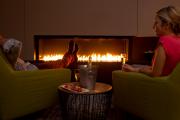
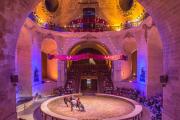
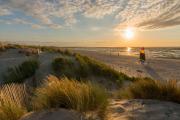
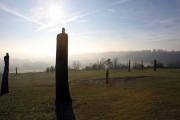
A
City break
in
Amiens
A city of contrasts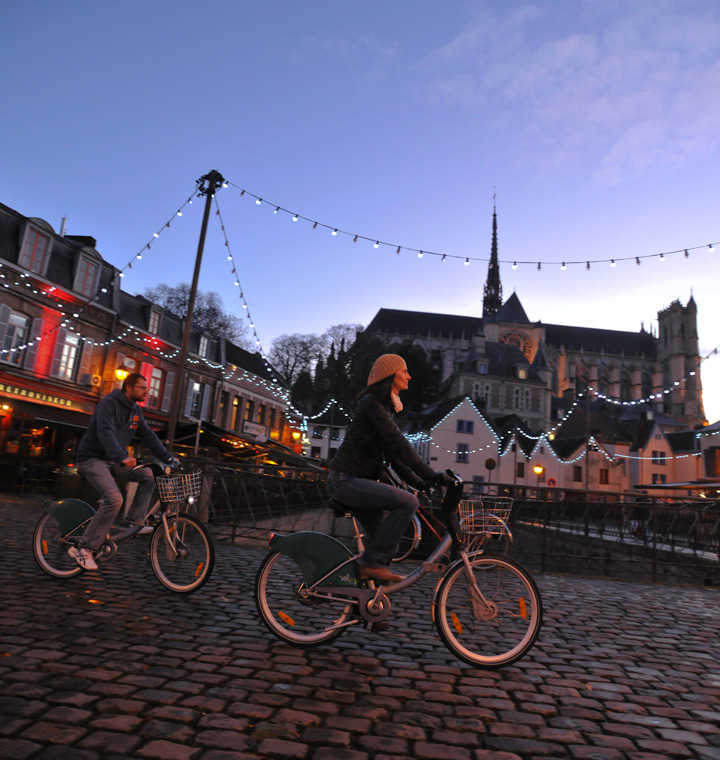 Cycling tour in Amiens just the two of you
© CRT Picardie/comdesimages
Cycling tour in Amiens just the two of you
© CRT Picardie/comdesimages
Twice the size of Notre-Dame de Paris and the largest gothic cathedral in Europe, Notre-Dame d’Amiens is a UNESCO heritage site with vibrant stained-glass windows, a labyrinth floor and a 42 metre high nave. It’s very much the heart of the city - but as you follow the cobbled streets away from it, you’ll find there’s much more to discover.
Amiens has its own type of macaroon made from almonds and honey. You can try them at artisan chocolatier Douceurs & Gourmandises, where you can also see the intricate delicacies and chocolate sculptures being made by hand. From there, it’s a short stroll to the Halles du Beffroi covered market where you can buy everything from meat and fish to wine and olives. At fromagier Julien Planchon’s stalls, you can taste local cheeses such as maroilles and bray picard, as well as cheeses from all over France (and some from the UK too). M. Planchon also creates artisanal cheeses including one with a jellied centre made from Somme poppies.
After a drink on one of the many terraces of the Place de Gambetta cafés, explore the shops of the pedestrianised streets or visit Maison Jules Verne, where the author lived at the end of the 19th century.
You might like to have lunch at one of the many restaurants along the canals in Saint-Leu (also known as “Little Venice”), or perhaps enjoy a picnic in Parc Saint-Pierre, followed by a boat ride through Les Hortillonnages - a series of simple privately-owned islands where local people grow vegetables and flowers.
“There’s a market on Saturdays in Place Parmentier which includes produce from Les Hortillonnages,” explains certified tour guide Julia Maassen, “It has a lovely atmosphere. And once a year in June, boats are loaded


with fruit and vegetables and the growers motor up the river in traditional dress to sell their produce at the quay, like they did in the olden days.”
As evening falls, the bars and their terraces in the square behind the cathedral come to life, quickly followed by the restaurants along the quay.
There’s a wide choice of hotels in the town. Boutique-style Hôtel Le Prieuré close to the cathedral offers individually styled rooms including a room in the chapel of the former priory. To really spoil yourself, consider the region’s only hotel with 5-stars. Hôtel Marotte has 12 stunning rooms and suites, including some with carved-stone freestanding baths and private saunas. Or if you’d prefer to get back to nature, stay in a rustic cabin in Les Hortillonnages just a few minutes’ walk or cycle from the city centre at D’une île à l’autre. Each cosy cabin comes with a rowing boat and bikes - a natural idyll with the buzz of city life just minutes from your door.
Pratical information
Beyond its peaceful cobblestoned streets and ramparts with sunset views, its quaint tea-rooms and charming antique shops, Laon is soaked in history to discover at your own pace.
From the bullock sculptures atop its vast, light-flooded cathedral to the secrets concealed beneath its old citadel, hilltop Laon conceals surprises that delight those drawn here for the medieval streets, laidback tempo and panoramic views.
Go Up High…
Strolling around Laon’s seven-kilometre ramparts is first on most visitors’ lists, but booking one of the fascinating tours arranged by the tourist office is also a must. Most of Laon Cathedral – one of the first Gothic examples in all France – can be explored with the help of an audio-guide, but special ‘behind the scenes’ tours also take you up the narrow staircase spiralling through one of the five towers, for magnificent city and countryside views, then through the spellbinding south gallery with its wonderful stones and sculptures amassed during restoration work.
… and Down Below
The second unmissable tour is of the subterranean labyrinth beneath Laon’s old citadel. A limestone quarry from Gallo-Roman times (spot the pickaxe marks in its walls), it’s also been a grain store and a jail, with inmates across history including Knights Templar and German prisoners.
There’s an even deeper history to this compelling space, however – fossil prints of giant sea snails in its walls bear witness to the fact that Laon was surrounded by a warm, shallow sea a million years ago.
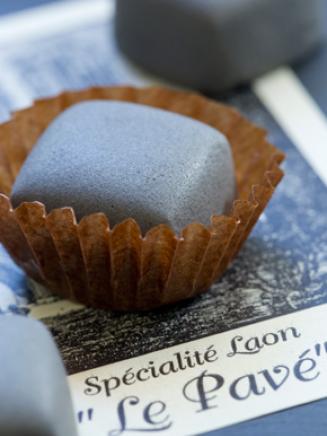 The "pavé de Laon"
© CRT Picardie/ASFlament
The "pavé de Laon"
© CRT Picardie/ASFlament
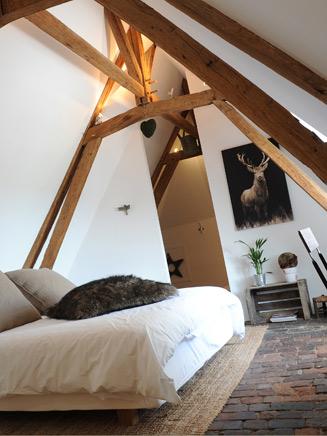 The "Maison des 3 Rois" B&B
© CRT Picardie/SBellet
The "Maison des 3 Rois" B&B
© CRT Picardie/SBellet
 local expert
Christelle
local expert
Christelle
An audio-guide from the tourist office will help you appreciate Laon’s 80-plus other historical monuments at your leisure, including the rare 12th-century octagonal Templar chapel in the grounds of the art and archaeological museum.
Yet with history oozing from every chink and corner, it’s easy to forget that much of the appeal of Laon is simply ambling its cobbled streets, especially Rue Châtelaine with its boutiques, antiques and homewares shops, and patisseries – don't miss Amandine, famed for its moreish pavé de Laon (meringue-covered chocolates).
Accommodation here comes small and characterful too the Maison des 3 Rois has just five stylish rooms in a 14th-century building with wooden floors and old beams.
Practical information
Treat the kids to an unforgettable Christmas including a magical horse show under the dome of Chantilly’s Grand Stables and a stay in Amiens with its festive market and cathedral illuminations.
Chantilly’s historic Grand Stables or Grands Ecuries are worthy of a visit at any time of year, but come at Christmas to enjoy a unique experience – the Stables’ atmospheric dome plays host to a spectacular family-oriented equestrian show on a new theme each year.
Also within the Stables, the Musée du Cheval, splendidly reworked in 2013 under the aegis of the Aga Khan Foundation, is a fantastic day out destination with children, with fascinating displays on horse throughout history and around the world, together with horses, donkey and ponies that you can visit in their pens. Afterwards, there’s the promise of a dessert topped with luscious Chantilly cream in the old kitchens of the Château de Chantilly just a few steps away.
Perfect as a base for visiting Chantilly, the city of Amiens a 90-minute drive away celebrates the festive season in style with France’s northernmost Christmas market, scented by roasting chestnuts and vin chaud. Meanwhile, its famous Gothic cathedral shimmers with a light show in a myriad of colours.
Amiens itself could be tailor-made for families, with a centre full of safe pedestrianised streets and spacious squares. It’s just a five-minute stroll from the cathedral square to the family-friendly Hôtel le Prieuré by traffic-free lanes.
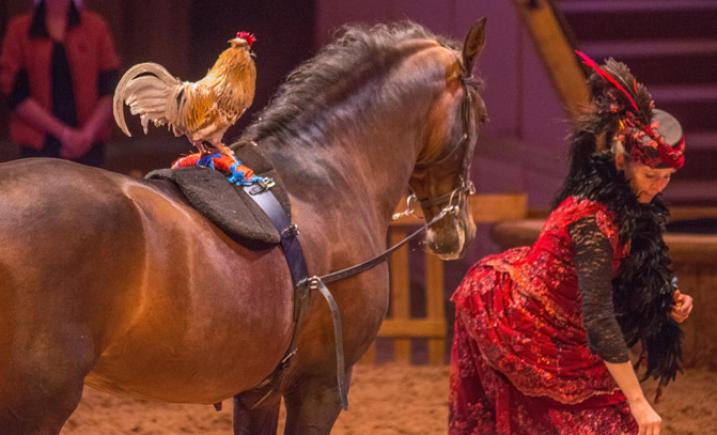 A magical horse show under the dome of Chantilly’s Grand Stables
© CRT Picardie/N.bryant
A magical horse show under the dome of Chantilly’s Grand Stables
© CRT Picardie/N.bryant
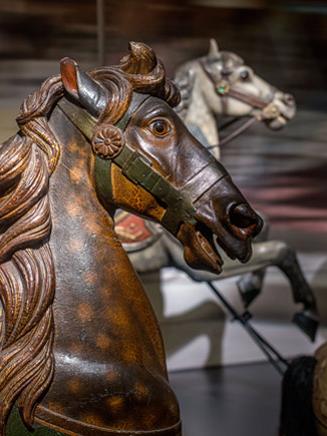 The museum collection
© CRT Picardie/N.Bryant
The museum collection
© CRT Picardie/N.Bryant
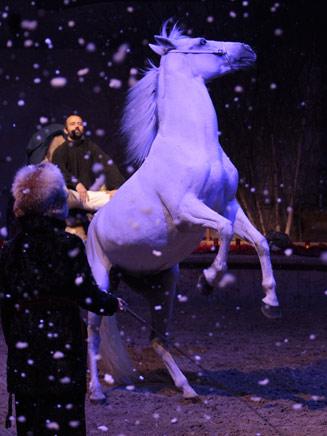 A Christmas show where grown-ups rediscover their childhood memories and toddlers begin making their own…
© CRT Picardie/AS Flament
A Christmas show where grown-ups rediscover their childhood memories and toddlers begin making their own…
© CRT Picardie/AS Flament
Passing by a wooden lagar, we head through a heavy door and descend 30 metres below ground, to the heart of the hill. The temperature drops, the humidity is palpable.
Low lighting reveals a walkway leading into medieval quarries stretching over a mile on two levels, dug in the time of King Philip II.
‘Try not to lose sight of me’, teases our guide at the Maison Pannier, founded in Dizy in the early 20th century but now located in the home town of poet Jean de la Fontaine, Château-Thierry, just a few hectometres from the Pannier vineyards.
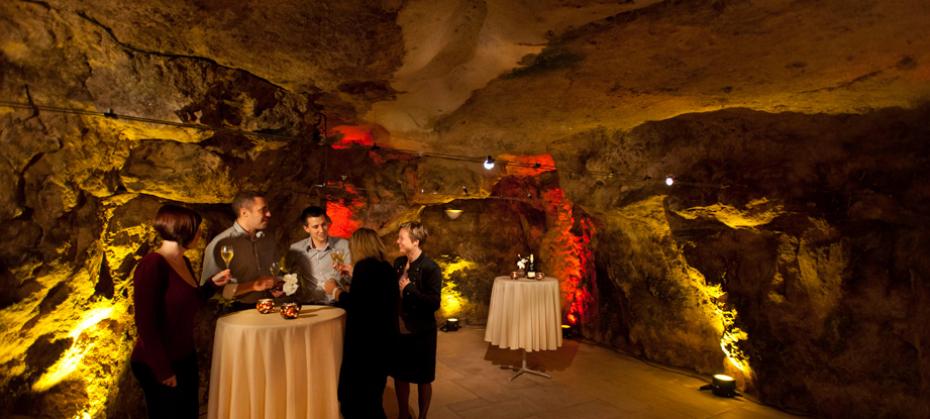 Cocktail dinner party in the cellars.
© CRT Picardie/comdesimages.com
Cocktail dinner party in the cellars.
© CRT Picardie/comdesimages.com
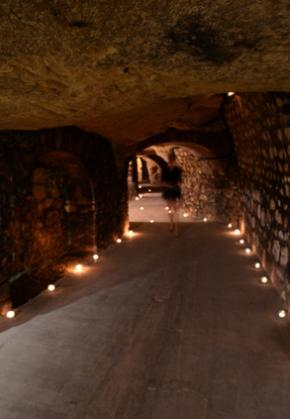 Try not to lose at Maison Pannier
© CRT Picardie/N.Bryant
Try not to lose at Maison Pannier
© CRT Picardie/N.Bryant

In the silence and half darkness, we encounter experts carefully placing bottles of champagne on stands. One, Thierry, head of the ancestral technique of riddling, tells us, ‘We’re very happy to share our passion by answering questions about blending, the formation of bubbles, the maturing process…’
Being so close to hundreds of barrels and bottles makes us thirsty. Happily, the tour ends in a tasting room, champagne flûtes in our hands, listening as our guide advises us to take time to admire the effervescence and smell the precious liquid before taking our first sip.
‘You can even carry on the tasting with a lunch or cocktail dinner party in the cellars,’ says Elisabeth. Whether with friends or as a couple, it’s a tempting option…
Practical information
Alcohol abuse is dangerous for your health, consume in moderation.
They’re small horses standing between 1.5 metres and 1.6 metres at the withers, sandy-coloured with hair featuring two colours. They live in the open countryside throughout the year and love playing games such as horseball or polocrosse. They’re ideal for riding, even for beginners. Their main qualities are: rustic, “docile and easy-going ”! There are 250 Hensons at the “Espace Equestre Henson Marquenterre” (Marquenterre Henson Equestrian Centre) with just under 40 being born every year. Do you like the sound of these horses? In that case, why not come to see the Transhumance of the Hensons? It take place every year at the end of October [+33 (0)322256864].
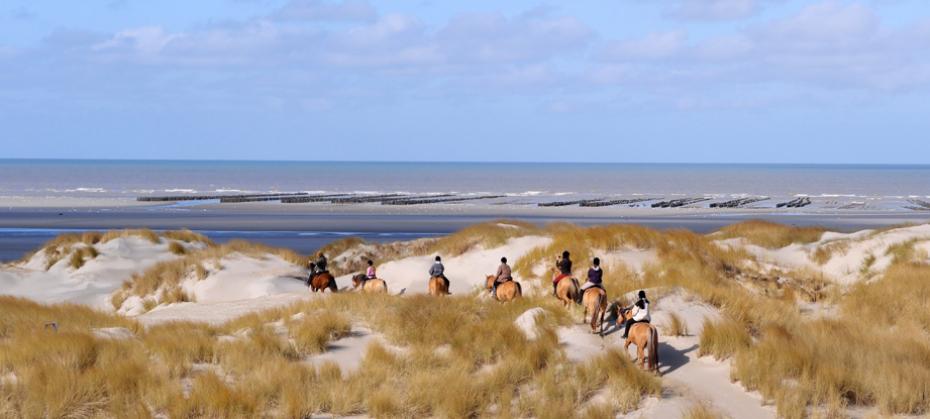 Sand dunes and wild landscapes for Somme Bay
© www.arcantide.com-f.coquet
Sand dunes and wild landscapes for Somme Bay
© www.arcantide.com-f.coquet
 Wild sheep is watching you...
© Domaine du marquenterre
Wild sheep is watching you...
© Domaine du marquenterre
A leisurely ride in a carriage drawn by Henson horses bred in the Marquenterre nature reserve takes you across sand dunes and wild landscapes for Somme Bay views that seem to go on for ever.
Leaving Saint-Quentin-en-Tourmont’s Espace Equestre Henson – France’s main stud farm for this athletic breed – we are soon in the midst of sandy plains and marshland stretching as far as the eye can see. There’s barely a sound to be heard. Civilisation lies behind us.
Settled comfortably into our carriage, we’re lulled by the rhythm of the hooves. Pale dunes, flashes of sunshine through the trees… the Domaine du Marquenterre private estate is a glimpse of Eden before we reach the sea. The horses trot up slopes over a carpet of pine needles and cones, taking us past forests, clearings and hunting lands.
Deer, wild sheep, rabbit and boar are abundant here. It’s not always easy to spot them, but it’s a great game for children, and the carriages are the best way of getting close to them.
‘Watch the horses,’ is our driver Anne-Caroline’s tip. ‘If they lift their head, something’s happening.’
When the carriage halts, we climb down for a stroll. The roof of a German blockhouse, eaten away by lichen, poking from the sand, offers up extraordinary sea views, including the chalky cliffs of Cayeux-sur-Mer and the Pointe du Hourdel lighthouse in the distance. Mussel beds strung out along the coast, marram grasses, a breeze scented with salt, resin and sand, and no buildings for miles… Paradise found.
Pratical information
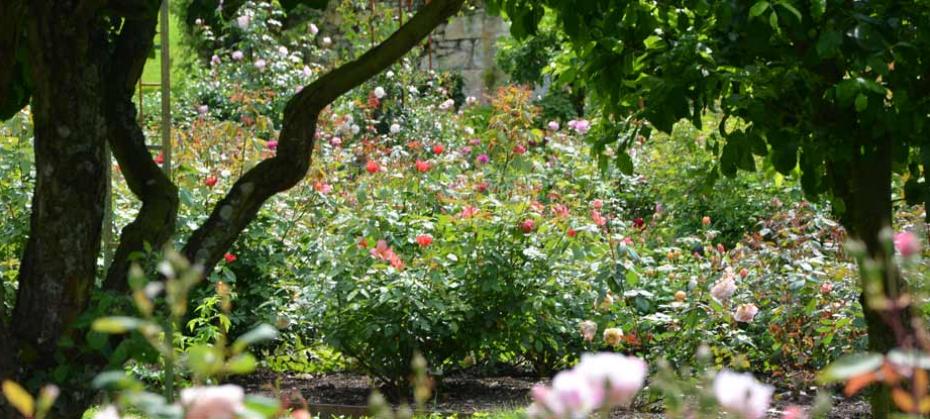 The Abbaye de Morienval
© Abbaye de Morienval
The Abbaye de Morienval
© Abbaye de Morienval
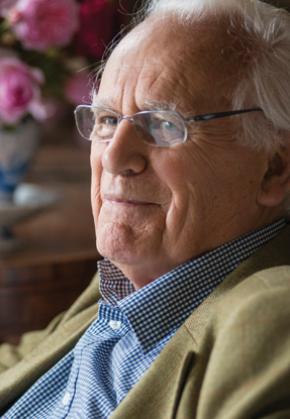 © David Austin
© David Austin
 Inspiration for a song famous all over the world, this region’s gorgeous roses are the fruit of the patient passing-down of floral know-how and creativity by renowned breeders and nurseries.
Inspiration for a song famous all over the world, this region’s gorgeous roses are the fruit of the patient passing-down of floral know-how and creativity by renowned breeders and nurseries.
A symbol of delicate beauty, roses – which flourish in Picardy soil and feature in many of its great gardens – express the very spirit of this region of France.
In 2014, the Abbaye de Morienval south of the forest of Compiègne opened France’s first garden dedicated to the repertoire of British rose-breeder David Austin. Here, within the confines of an ancient royal monastery, visitors can wander amidst more than 1,600 rose bushes from 154 varieties, buy a bush to take home from the Rose Centre, and relax in the tea-room with its pretty terrace.“Roses are like good wines: they start with the nose.” David Austin
Created by David Austin after years of research, 'The Rose of Picardy®’– Ausfudge to experts – resembles a poppy,
with five deep-red petals with a pink blush and light, fruity fragrance. Christened in 2004 to commemorate the 90th anniversary of World War I, it was named for a song written in 1916 by an English soldier and set to music by Haydn Wood. Since then, the song has travelled the world and been recorded by more than 300 singers, including Frank Sinatra and Yves Montand.
In 2014, as if providing a symbolic counterpoint to the blood-red Rose of Picardy, the regional council created the pure white Rose de la Paix (Rose of Peace). And Picardy as a whole is forever producing new rose varieties, in celebration of famous inhabitants or historical sites, including the heady red and yellow Jules Verne, the striking Henri Matisse, and the pink Palais Impérial de Compiègne – the latter with a colour somewhere between sugared almond and porcelain, giving it an apparent fragility that belies its true Picard characteristic: hardiness!
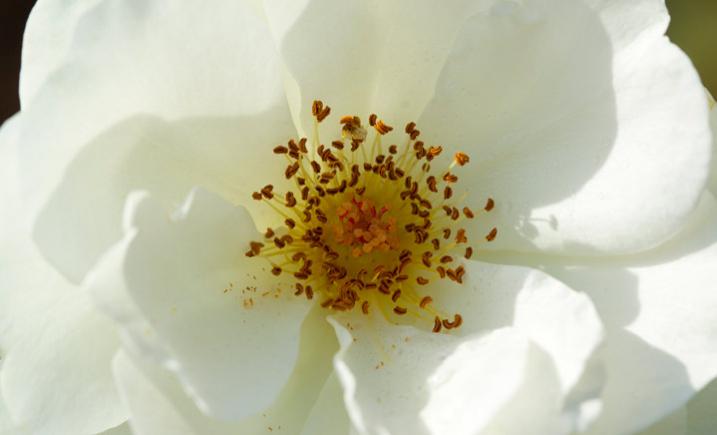 The pure white Rose de la Paix (Rose of Peace)
© CRT Picardie/AS Flament
The pure white Rose de la Paix (Rose of Peace)
© CRT Picardie/AS Flament
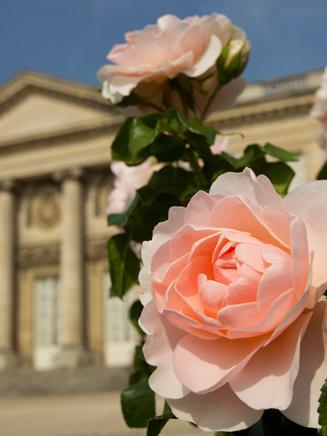 The pink Palais Impérial de Compiègne
© CRT Picardie/ASFlament
The pink Palais Impérial de Compiègne
© CRT Picardie/ASFlament
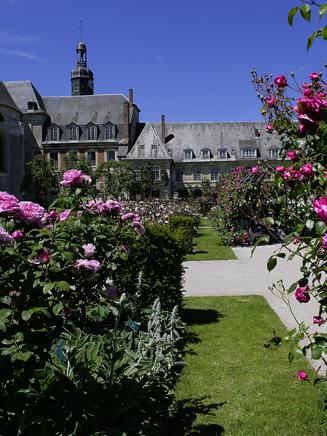 In the Abbaye de Valloires grows the ®Rose of Picardy
© Editions Gaud
In the Abbaye de Valloires grows the ®Rose of Picardy
© Editions Gaud
Reawakening colours from the 13th century.
It’s pitch black in the portico of the UNESCO monument Notre-Dame Cathedral…until suddenly, the three gates of the western façade and the gallery of kings are illuminated by an incredible light show. As if by magic, the cathedral’s 13th century colours are vividly brought back to life.
The idea for the multi-coloured displays came about when Notre-Dame Cathedral in Amiens was renovated between 1992 and 1999. As the many statues along the walls were renovated, more and more colours were discovered – evidence that the Cathedral had been much more colourful during the Middle Ages than it is in the present day.
 local expert
Samuel
local expert
Samuel
Meanwhile at the unfinished 13th-century Saint-Pierre Cathedral in Beauvais, in between Amiens and Paris, the light shows have a different feel. The 30-minute shows are projected onto the impressive gothic choir – the tallest in the world – to show off its stunning contours. Brightly-coloured “statues” are beamed into the usually-empty nooks and then linked by the branches of a projected giant tree.
“In Beauvais, we’ve let our imagination run wild,” says Hélène Richard, artistic director at Skertzò. “The cathedral is like a stone book, a mirror which reflects the history of the town. We are presenting our own interpretation of its story.”
Over time, the light shows have developed and evolved. At Laon’s Notre-Dame Cathedral, the many gargoyles are brought to life with coloured lights throughout August during a 20-minute show.
Practical information
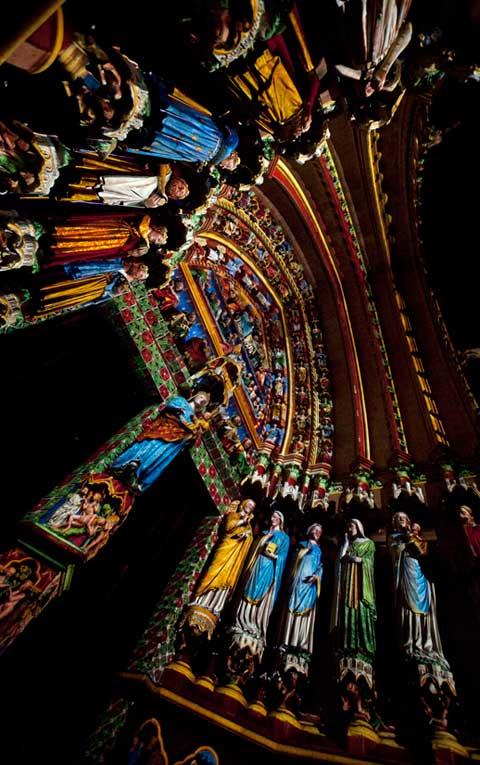 One of the three gates of the Notre-Dame Cathedral of Amiens© L. Leleu
One of the three gates of the Notre-Dame Cathedral of Amiens© L. Leleu

Calendar
a 40-minute show.
From June 15 to 30 2015 at 10.45 pm.
From July 1 to 31 2015 at 10.30 pm.
From August 1 to August 31 2015 at 10 pm.
From Sept 1 to September 21 2015 at 9.45 pm.
From December 1 to January 1 2016 at 7 pm.
Office de tourisme : amiens
Amiens Tourist Office: Tel: +33 (0) 3 22 71 60 50
Send an e-mail 2.301979 49.894526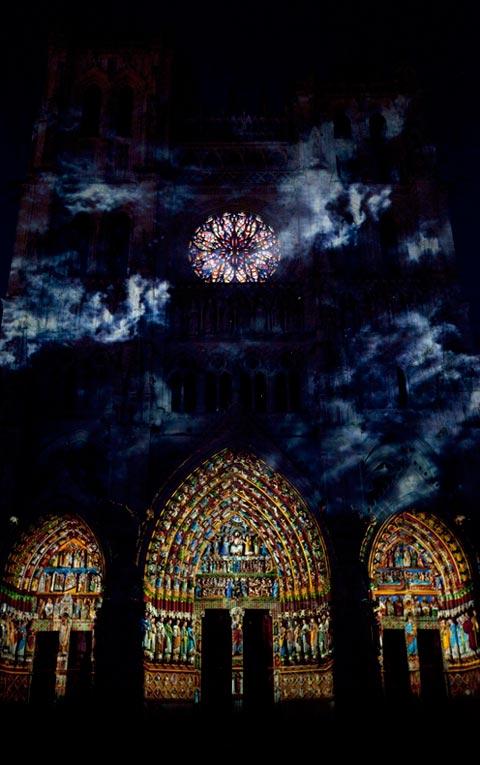 The western façade of Notre-Dame Cathedral of Amiens© L. Leleu
The western façade of Notre-Dame Cathedral of Amiens© L. Leleu 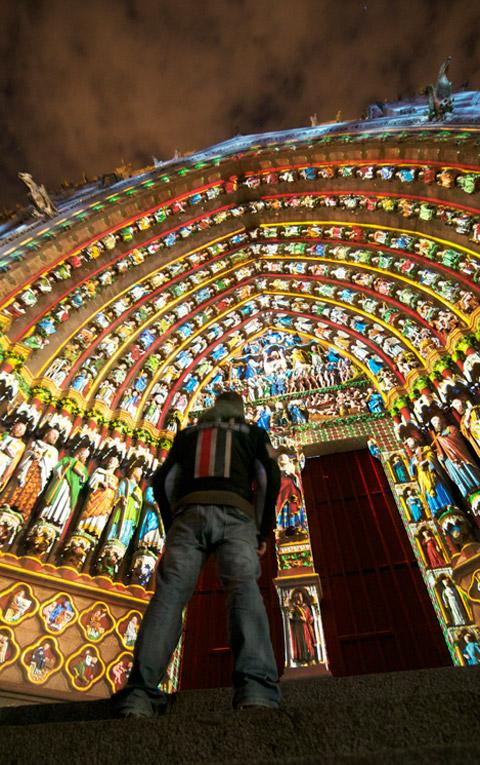 The gate of the golden Virgin of the Notre-Dame Cathedral of Amiens© CRT Picardie/NBryant
The gate of the golden Virgin of the Notre-Dame Cathedral of Amiens© CRT Picardie/NBryant The British
in the
Somme
Exploring a shared wartime history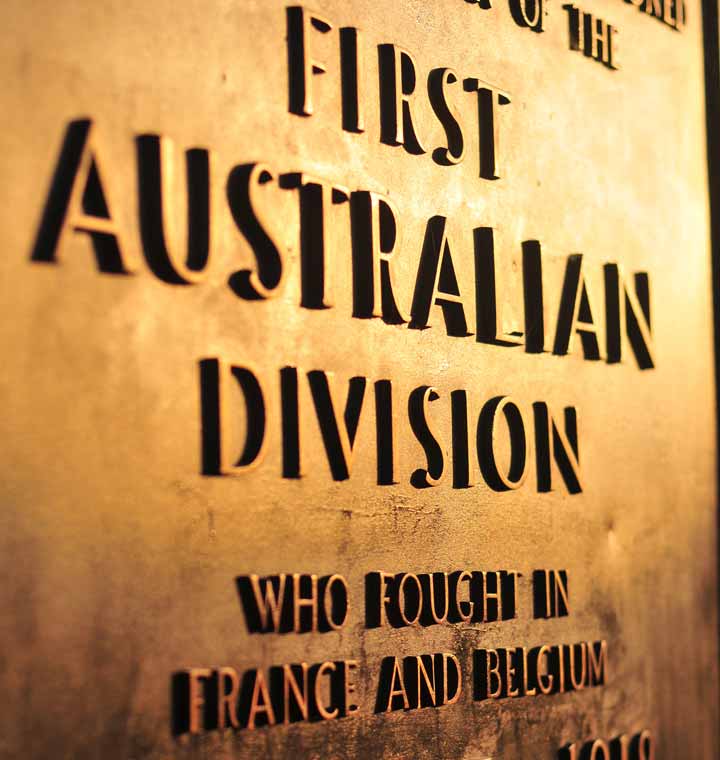 Australian Memorial in Pozières
© CRT Picardie/N.Bryant
Australian Memorial in Pozières
© CRT Picardie/N.Bryant
The Somme was an enormous shock for the British – at the start of World War I its soldiers were volunteers, often untrained in battle.
Many visitors come to pay their respects to a relative who died here – sometimes they are the first in their family to have had the chance to do so. They are often helped by guides such as Sylvestre Bresson, who is passionate about helping families trace their history: he helped one British-Australian family identify the trench a relative had described in his diary and was moved when they took away a piece of the barbed wire he had been installing there.
British and Commonwealth history in the Somme is unique in that soldiers were buried ‘where they fell’; most French and German who died were repatriated. With the last veteran and eyewitness having died in 2009, there has been a resurgence of interest in a conflict generally less well understand than World War II. Meanwhile, the Internet has made it easier for people to trace their family history.
Whether you visit battlefields, memorials, cemeteries and museums independently or with a guide, to find a relative or out of historical interest, you can’t fail to be stunned by the scale of the loss of life. At the Thiepval Memorial, vast columns are inscribed with the names of the 72,195 British and South Africans who died in the Somme but have never been found. At Delville Wood, a memorial and museum remembers a 3000-strong South African brigade of whom only 145 survived. The wood itself, pocked by shell holes, has been replanted using acorns brought from South Africa.
At Pozières, a memorial pays tribute to the 23,000 Australians who died here – more than in any other battle. At Beauhamel Newfoundland, a path winds through a battlefield still threaded with trenches and dotted by memorials to Canadians and Scots. Lochnagar Crater is the remnant of one of 17 mine explosions designed to wrongfoot the Germans. Musée Somme 1916 in Albert has displays on trench life, while the Historial de la Grande Guerre in Péronne castle looks at the war from the point of view of the common suffering of combatants and civilians of different nationalities.
"Sylvestre takes all visitors to a German cemetery to pay their respects."
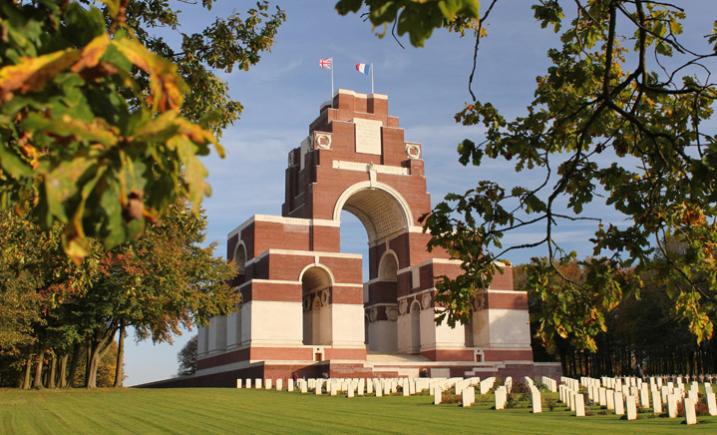 Vast columns inscribed with the names of the 72,195 British and South Africans at the Thiepval Memorial© CRT Picardie/G.Wasikowski
Vast columns inscribed with the names of the 72,195 British and South Africans at the Thiepval Memorial© CRT Picardie/G.Wasikowski 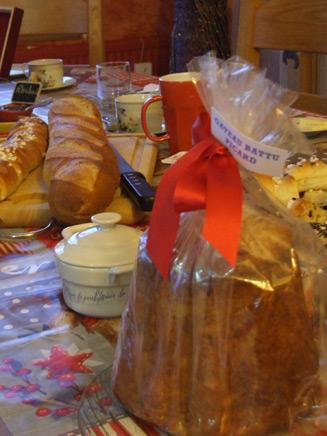 Taste a hearty breakfast in "Le clos du clocher" B&B
© Le clos du clocher
Taste a hearty breakfast in "Le clos du clocher" B&B
© Le clos du clocher
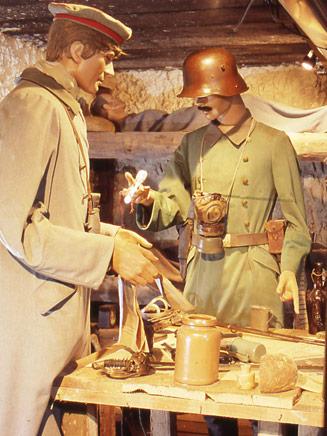 Discover the trench life at the Museum Somme 1916 in Albert
© CRT Picardie/ASFlament
Discover the trench life at the Museum Somme 1916 in Albert
© CRT Picardie/ASFlament
 local expert
Emilie
local expert
Emilie
Other sites are more low-key. Devonshire Cemetery is directly on the trench where 163 soldiers fell. Fricourt has one of the few German cemeteries here – one that despite its size holds 17,000 soldiers, 12,000 in four mass graves. Locals regularly lay wreaths here.
And then there’s the landscape itself, with its scars and relics – a constant reminder that we must never forget.
The Clos du Clocher is a calming village guesthouse with a wellness centre. Alternatively, many visitors base themselves in Somme capital Amiens, where the Hôtel Marotte is a tranquil urban retreat.
Practical information
A Writer’s War
Following Tolkien’s Footsteps in the Somme"Roses of Picardy She is watching by the poplars, Colinette with the sea blue eyes She is watching and longing and waiting Where the long white road lies. And a song that stirs in the silence, As the wind in the boughs above. She listens and starts and trembles. Tis the first little song of love… "
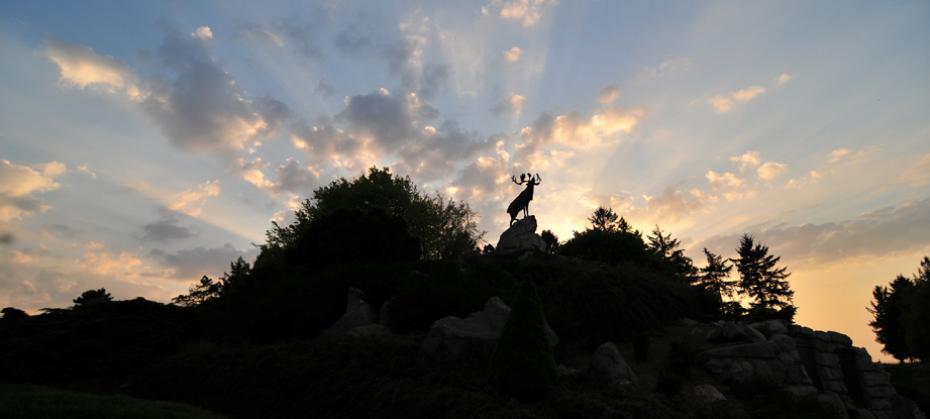 Beaumont-Hamel
© CRT Picardie/N.Bryant
Beaumont-Hamel
© CRT Picardie/N.Bryant
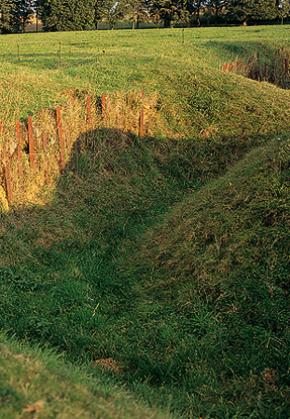 Preserved trenches in Beaumont Hamel
© Contextes
Preserved trenches in Beaumont Hamel
© Contextes
As a young graduate, Tolkien found himself transported from the ivory towers of Oxford to the bloody battlefields of the Somme. It was an experience that marked both him and his famous fiction.
Few who read Tolkien realise how close the author came to losing his life – as did so many young men of his generation, a great number of whom were also emerging writers, poets and artists – in the Somme. Visiting sites where the writer saw action can throw new light onto some of his stories and novels.
Tolkien was commissioned as a Second Lieutenant in the Lancashire Fusiliers and trained in Staffordshire, lodging nearby with his new wife Edith. On 2nd June 1916 he was summoned to France by telegram.
“By 1918 all but one of my close friends were dead,” he later wrote. Among them were Robert Gilson and Geoffrey Smith, who died in the assault on Beaumont Hamel, now the site of a peaceful memorial park and a rare network of preserved trenches.
Battlefield tours or self-drive itineraries can help visitors retrace Tolkien’s experiences. He took part in the attack on Ovillers – site of the Lochnagar mine crater – and saw action at Thiepval Wood, now home to a vast memorial to the missing. Astonishingly, he made revisions to his story Kortirion among the Trees in a dugout in the Thiepval frontline. After the capture of Regina Trench on 21–22 October, he fell sick and was sent to hospital then back to England.
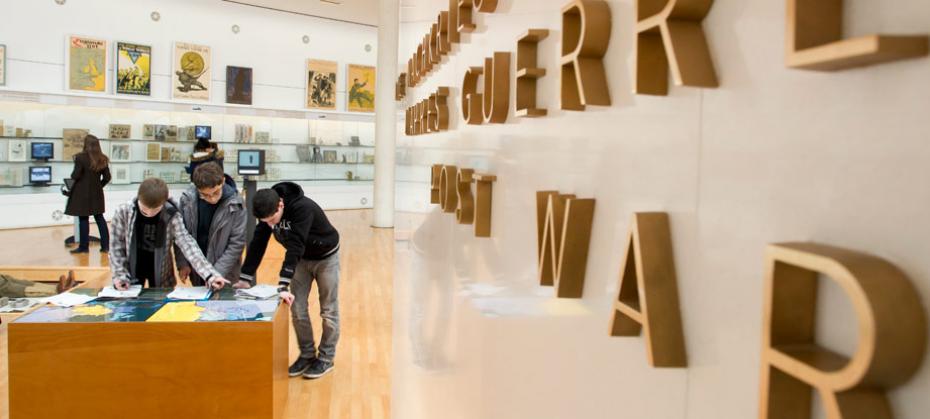 Historial de la Grande Guerre museum in Péronne
© CRT Picardie/AS Flament
Historial de la Grande Guerre museum in Péronne
© CRT Picardie/AS Flament
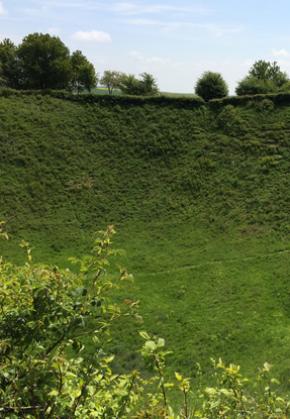 Lochnagar Mine Crater
© CRT Picardie
Lochnagar Mine Crater
© CRT Picardie
Don’t miss German veteran Otto Dix’s anti-war works in the Historial.
Tolkien acknowledged the influence of parts of the war-ravaged landscape on his work – in particular, the Dead Marshes and approaches to the Morannon in The Lord of the Rings, with the faces seen in the water and the mud.
But Fanette Pocentek, who works at the Historial de la Grande Guerre museum in Péronne, is among many experts who believe the Somme had more of an effect on the writer’s work than he always recognised. For instance, Frodo is transformed by his quest just as soldiers are changed by their experiences, and some of his symptoms while carrying and after destroying the Ring resemble those suffered by the shellshocked, including temporary blindness, uncontrollable trembling and anxiety. Meanwhile, the sniffing, hissing, horse-back Ringwraiths of The Lord of the Rings have been likened by some readers to German cavalry soldiers with their gas-masks, and the Ringwraiths’ screams to the sound of flying artillery shells.
Tolkien did acknowledge that Frodo and Sam’s relationship evokes that of an officer and his batman. writing: ‘My Sam Gamgee is indeed a reflexion of the English soldier, of the privates and batmen I knew in the 1914 war, and recognized as so far superior to myself.’ Elsewhere he expressed his ‘deep sympathy and feeling for the “tommy”, especially the plain soldier from the agricultural counties.’
Practical information

